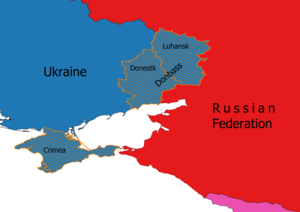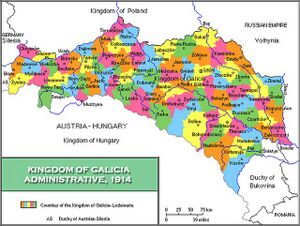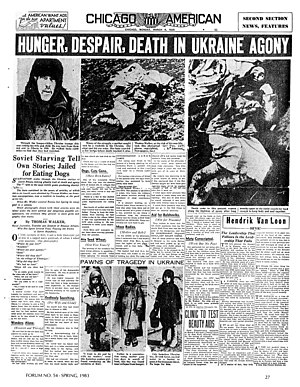Ukrainian immigration has played an important part of Ukraine's history. Immigrants from nearby countries and as far as Asia and Africa come to Ukraine. Many people of various backgrounds have come to Ukraine to build new lives but immigration also has been used to increase the number of Russians living in Ukraine for a political agenda and to rebuild Ukraine after WWII.

Ukraine showed its willingness to welcome foreigners when it opened its borders in 1996 with its constitution that gave foreigners rights. Foreigners gained the right to immigrate, apply for asylum and naturalization, and move around Ukraine. Foreigners who are legally residing in Ukraine are also provided equal rights in the constitution. [1]
But immigration in Ukraine has dramatically slowed, due to the Russo-Ukrainian War that started in February 2014 and continues today. Russia annexed Crimea, a Ukrainian territory, and supported pro-Russian separatists in the Donbas area, resulting in starting the war in eastern Ukraine in 2014.
Statistics
In 2001, Ukrainians made up 77.8 percent of the country's population. The next largest ethnic group was Russians at 17.3 percent. Other ethnic groups living in Ukraine were Belorusians (0.6 percent), Moldovans (0.5 percent) and Crimean Tartars (0.5 percent). Bulgarians, Hungarians, Poles, Jews and Romanians also were individually noted in the census as less than 0.5 percent. [2]
Pre-Russian Revolution era
The flow of immigrants in Ukraine was very noticeable before the Russian Revolution. During the late 18th and early 19th centuries, small groups of Germans immigrated to western Ukraine while it was under control by the Austro-Hungarian Empire. Meanwhile Poles immigrated in large groups to Bukovina and Galicia, in addition to other areas in western and central Ukraine, during the 1800s. [3]

German and Jewish immigrants also came to Bukovina in the 19th century. German was the official language of Bukovina but Ukrainian and Romanian also could be heard spoken among the immigrants in Bukovina. [4]
In southern Ukraine, Russians, Balkans and Germans began colonizing the area in the 18th century. Odesa, located on the Black Sea, became a large city known for its culture created by the diverse population. [4]
Soviet Era
Immigration to Ukraine was much larger than the emigration from Ukraine during the Soviet era. Many of the people from the USSR immigrating to Ukraine were pensioners at that time. [1]
Western Ukraine attracted another 300,000 Polish immigrants from 1918–1939. At the same time, Transcarpathia attracted 30,000 Czech immigrants and northern Bukovina and northern Bessarabia saw a noticeable group of Romanian immigrants. [3]
The Soviet government also recruited for foreigners to work in city factories to help industrialize the USSR. More than 2,000 foreigners were employed in Ukraine by the Commissariat of Heavy Industries in 1932. About 600 foreigners were working just at one factory in Kharkiv. [5]

Immigration in Ukraine also had political intentions during the Soviet era. Soviet authorities encouraged Russians to immigrate to Ukraine as part of Russification of Ukraine that started during the 1930s. Russians were encouraged to relocate to Ukraine in cities and areas with industrialization.[3] Soviet authorities wanted Russians to dominate as a people and culture in Ukraine, therefore Russifying the country.
This policy was done while millions of Ukrainians were killed in Holodomor, a politically-created famine to intentionally kill as many Ukrainians as possible during 1932-1933. Ukrainians also faced persecution and deportation for false crimes during the time of Russification. [6]
Then after WWII, Russian migrants relocated to Ukraine, along with other areas of the USSR, to reconstruct and develop Ukraine after the destruction that occurred during the war. About 2.7 million people spread throughout the USSR, include Ukraine, from the early 1950s to the mid-1970s. [7]
Immigration also came to Ukraine from about 250,000 Crimean Tatars, who are known as Crimea's indigenous people. They came back to their homeland after dictator Joseph Stalin died in 1953. The Crimean Tatars were forced to relocate to Central Asia in 1944. [8]
Independent Ukraine
A large flow of immigrants came again once the Iron Curtain of the USSR was no more. More than one million people immigrated to Ukraine from early 1991 to late 1992, according to the State Committee of Ukraine for Statistics. The vast majority of these immigrants (984,000 people) were citizens of the former USSR and the remaining 81,000 immigrants were mostly Soviet Army personnel and their close family members who were coming from central Europe. [6]
Immigration into Ukraine decreased noticeably by 2004, when only 38,600 people arrived in the country. Most (32,600 people) were coming from other countries of the former USSR, while another 6,000 were citizens of countries outside of the former USSR. [6]
More than 290,000 immigrants were living in Ukraine in 2020. At least 12,000 immigrants applied for permits to reside permanently in Ukraine that year. [9]
Labor immigration
Ukraine also attracts foreigners and stateless people to work temporarily in the country. More than 23,400 foreigners and stateless people were working in Ukraine on a temporary basis in 2020, compared to 12,400 people in 2017. These people mostly work as executives and managers. It is estimated one-third of labor immigrants are running a business. Labor immigrants provide 8 percent of Ukraine's gross domestic product. [9]
Migrants in Ukraine
Due to Ukraine's location, migrants from Africa and Asia travel through the eastern European country as part of their journey to countries part of the European Union. [6]Ukraine has four neighboring countries that are members of the European Union- Hungary, Poland, Romania and Slovakia. [10] The European Union helps Ukrainian officials deal with migrants through financial and technical support. [6]
Explore more on Ukrainian immigration
- Driven by Faith: The German Protestants in Ukraine, webinar by Dave Obee, on Legacy Family Tree Webinars
- Austria-Hungary, World War I Casualty Lists, 1914-1918 at MyHeritage- The collection has records on people of various ethnicities who lived in the Austro-Hungarian Empire.
- Gesher Galicia's All Galicia Database- More than 830,000 records are indexed on the Jewish population of Galicia on this searchable database.
See also
References
- ↑ 1.0 1.1 "Caught Between East and West, Ukraine Struggles with Its Migration Policy", Migration Policy Institute, Jan. 1, 2006, https://www.migrationpolicy.org/article/caught-between-east-and-west-ukraine-struggles-its-migration-policy
- ↑ Ukraine, Migration Policy Institute, https://www.migrationpolicy.org/country-resource/ukraine
- ↑ 3.0 3.1 3.2 "Immigration", Internet Encyclopedia of Ukraine, https://www.encyclopediaofukraine.com/display.asp?linkpath=pages%5CI%5CM%5CImmigration.htm
- ↑ 4.0 4.1 "Ukraine under direct imperial Russian rule", Britannica, https://www.britannica.com/place/Ukraine/Ukraine-under-direct-imperial-Russian-rule
- ↑ "Foreign Workers in Soviet Russia, 1920-40: Their Experience and Their Legacy," Andrea Graziosi, Cambridge University Press on behalf of International Labor and Working-Class History, No. 33 (Spring, 1988), https://www.academia.edu/3035919/Foreign_Workers_in_Soviet_Russia_1920_40_Their_Experience_and_Their_Legacy
- ↑ 6.0 6.1 6.2 6.3 6.4 "Caught Between East and West, Ukraine Struggles with Its Migration Policy", Olena Malynovska, Jan. 1, 2006, Migration Policy Institute, https://www.migrationpolicy.org/article/caught-between-east-and-west-ukraine-struggles-its-migration-policy.
- ↑ "Russia: A Migration System with Soviet Roots", Olga Chudinovskikh and Mikhail Denisenko, May 18, 2017, https://www.migrationpolicy.org/article/russia-migration-system-soviet-roots
- ↑ "Ukraine on the move: a century of migration", Peter Gatrell, May 20, 2022, Engelsberg Ideas, https://engelsbergideas.com/essays/ukraine-on-the-move-a-century-of-migration/
- ↑ 9.0 9.1 Prague Process, https://www.pragueprocess.eu/en/countries/425-ukraine
- ↑ "Ukraine–European Union relations", Wikipedia, https://en.wikipedia.org/wiki/Ukraine%E2%80%93European_Union_relations